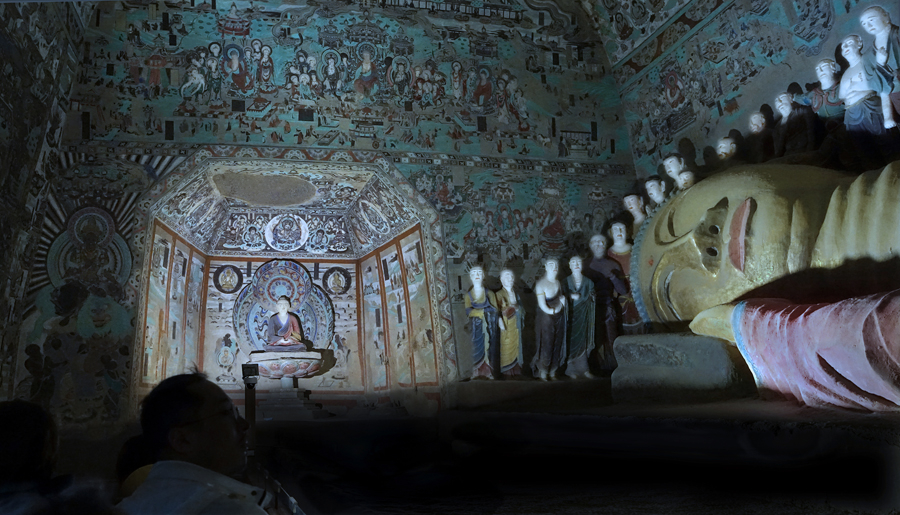China beefs up cultural relic protection with digital technology

Mogao Grottoes, a world cultural heritage site in Dunhuang of Gansu province, on Oct 2, 2019. It has 735 caves, 2,415 colored clay statues and 45,000 square meters of murals, making it the largest and richest art treasure trove in the world. [Photo by Ren Shichen/cpanet.org.cn]
In 1900, a great discovery was made at the Mogao Grottoes, a UNESCO World Heritage site in Dunhuang, Northwest China's Gansu province. A small chamber later dubbed the Library Cave was opened for the first time in hundreds of years, revealing more than 60,000 cultural relics, including a wide range of manuscripts dating from the 4th century to the 11th century.
For thousands of years, while dynasties changed and wars raged outside, this cave measuring less than 8 square meters, seemed to be lost in time, fortunately preserving its store of historical treasures. It was one of the most important archaeological discoveries in the 20th century.
On Tuesday, an interactive digital platform called the "Digital Library Cave" was launched, featuring a virtual duplication of the Library Cave, employing digital technology to revive the relics for the benefit of both researchers and the general public.
Jointly developed by the Dunhuang Academy and leading Chinese tech firm Tencent, the platform uses advanced gaming technologies to reproduce the historical scene of the Library Cave as it was more than 100 years ago. Virtual visitors can engage in role-play to travel to ancient dynasties and interact with eight historical figures, thereby immersing themselves in the culture of Dunhuang.
Zhao Xiaoxing, director of the literature research institute at the Dunhuang Academy, said that researchers made deliberate studies of literature, architecture and music related to the cave before establishing the digital platform.
Since the 1980s, the Dunhuang Academy has sought to use digital technology to ensure the permanent preservation and sustainable use of cultural relics. Seven years ago, it launched "Digital Dunhuang," a website that offers virtual views of the Mogao Grotto caves. It employed massive data resources, such as photos, video clips, archive materials and a 360-degree view of the millennium-old caves, sharing the wonders of the site with a global audience.
























